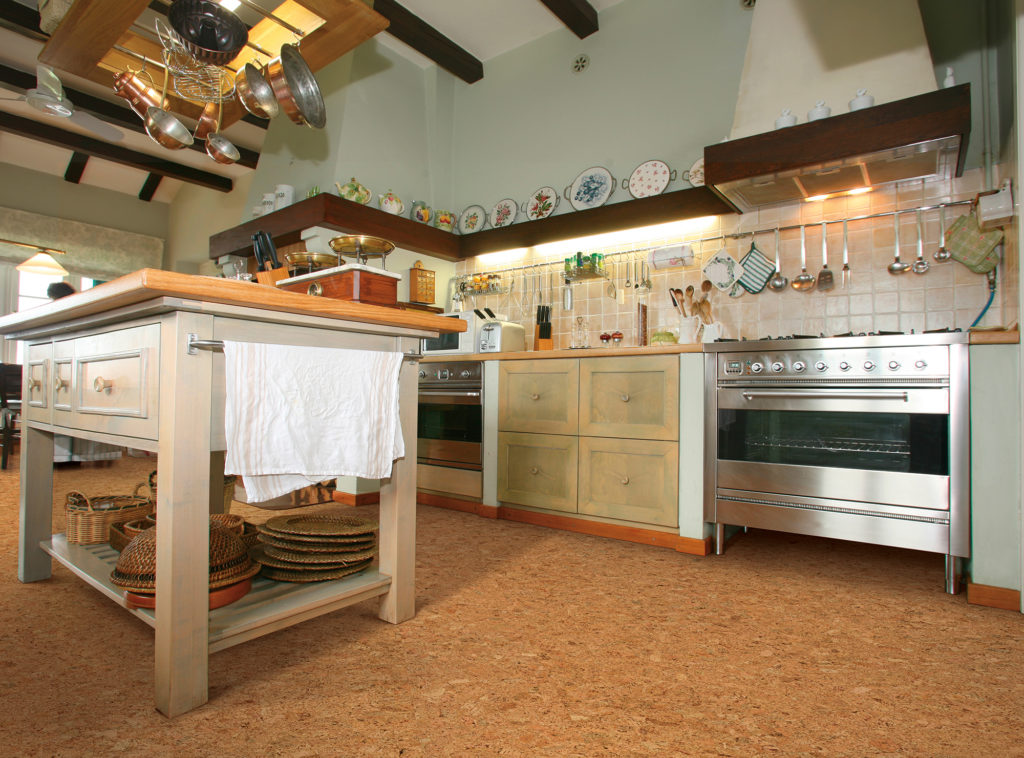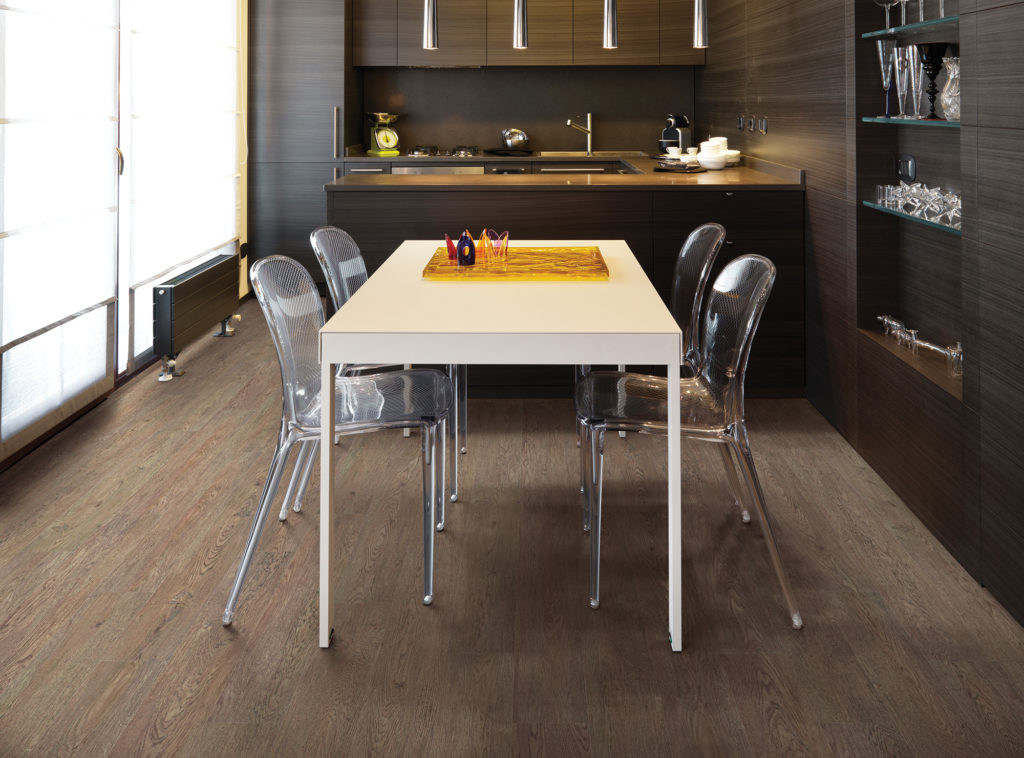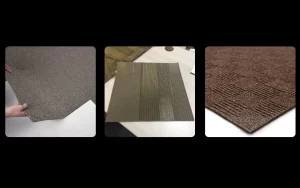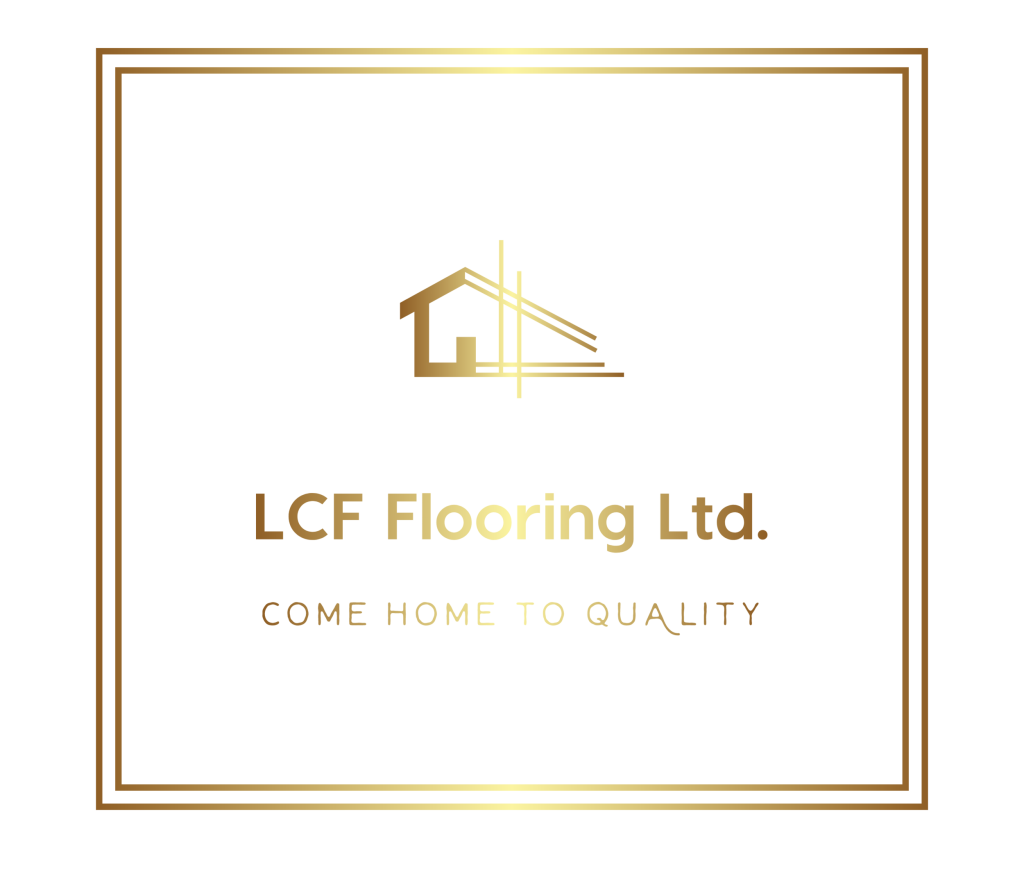If you’re looking into the advantages and disadvantages of cork flooring, we’re guessing you have a good reason (beyond the fact that cork is absolutely gorgeous).
Maybe you have tile in your bedroom, and rolling out of bed in the morning feels like stepping into a pool of ice water.
Maybe you have laminate, and wearing socks is like sliding around on ice with sneakers on.
Or maybe your carpet is causing your allergies to exacerbate no matter how many times a week you vacuum. Sound familiar?
Whatever the case, we’re happy to report that cork flooring could be the answer to your problems!
That’s why below, we’re going to go over absolutely everything you need to know about the advantages and disadvantages of cork flooring.
The Advantages of Cork Flooring

Before we get into the disadvantages of cork flooring, let’s highlight all the ways cork can save you money and improve the comfort of your home. (We get it. That’s why you’re here!)
Cork Floors Are Insulating (and Can Lower Your Utility Bills!)
The natural thermal properties of cork create an inexpensive alternative to heated wood floors. Cork has a 3.0 R-Value per inch of thickness—meaning it’s about as warm as a mid-weight puffy jacket! Translation: you can have toasty feet without paying a fortune to install radiant floor heating systems.
Engineered Cork Flooring is Easy to Install (and Perfect For The DIY Crowd)
Like many DIY wood floors, engineered cork flooring planks are often fitted with click-lock installation grooves—making them just as easy to install as fake wood flooring options like vinyl and laminate. And since click-lock planks create a floating floor, you can install them over existing floors just like with snap together tile flooring. Win-win!
Most Cork is Sustainable, Biodegradable, and Eco-Friendly
Cork is one of the most eco-friendly flooring options you can buy. Following a 20 year maturation period, cork oak trees can be harvested every nine or ten years for up to two centuries!
Hardwood trees, on the other hand, can take decades to reach maturity. And once they’re cut down, that’s that. There’s no repeated harvesting. Basically, this makes cork a sustainable and ultra-green building material. Even fast-growing softwood surfaces like pine flooring or Douglas fir flooring can’t hold a candle to cork when it comes to sustainability!
Pro tip: many of the most eco-friendly types of flooring will boast a FloorScore Certification.
Cork Flooring is Sound-Dampening and Super Quiet
Cork gets its sound-dampening acoustic properties from the mind-bending quantity of tiny little air pockets within the material. How many tiny little air pockets constitute “mind-bending”? Approximately 40 million per cubic centimeter.
Cork’s quiet nature pairs perfectly with bedrooms, living rooms, dens, offices, children’s playrooms, gyms, music studios, dance studios, you name it—pretty much anywhere you want to keep noise in or out. If you’re stuck trying to choose between carpet and hardwood in the bedroom, cork can be a great middle ground!
Cork’s Springy Nature Makes it Easy on Your Joints
Those same tiny little air bubbles that make cork floors so quiet also make them kind to your body. Cork’s spongy-but-firm quality is easy on your joints.
This additional support is proven to ease back and joint pain, making cork a smart option if you spend a lot of time on your feet. Cork flooring also functions as an extra safety precaution for the elderly or disabled who may have an increased risk of injury in the event of a fall.
Are there disadvantages of cork flooring? Sure—but comfort is definitely not one of them!
Cork Flooring Contains Suberin—a Naturally Fire-Retardant Substance
One of the greatest advantages of cork flooring lies in a naturally occurring, waxy substance it contains called suberin. Suberin is actually named after the cork tree (Quercus suber) because there’s tons of suberin in cork.
Why is suberin so amazing? Because it’s a natural fire retardant! Sure, cork will burn—but thanks to its suberin, it’ll do so slowly (and it won’t produce flames, so it won’t spread fire as quickly). Fire-retardant? Take that, cork flooring disadvantages.
Cork is Antimicrobial and Hypoallergenic
Suberin also makes cork naturally antimicrobial and hypoallergenic. Bacteria, small insects (think dust mites), mold, mildew, pet dander, and small rodents hate this stuff. That’s why we love it.
If anyone in your family has allergies, stop debating between carpet vs laminate and go with a cork product instead. If you have asthma or other respiratory issues, cork will give you both comfort and durability without aggravating your symptoms. Very cool.
You Can Refinish Cork Flooring As Long As It’s at Least 4mm Thick
Traditional cork and engineered cork with a thick veneer can be refinished just the same as hardwood can. Just sand, re-stain if necessary, and apply a new coat of varnish!
Cork Floor Patterns Disguise Flaws (and Some Products are Self-Repairing)
Cork floors have a busy pattern that hides minor scuffs and scratches. Even better, cork is self-repairing and fills in dents over time.
Warning: cheaply manufactured cork from big box stores is usually printed with a cork image. This stuff won’t hide flaws like real cork will, so we can not stress this enough: make sure to buy your cork flooring from a reputable manufacturer. After all, you wouldn’t expect to get low-quality material from the best hardwood floor brand, would you? Of course not—and cork is no different!
The Disadvantages of Cork Flooring

There are some disadvantages of cork flooring, but if you ask us, they aren’t dealbreakers. That being said, it’s important to be aware of potential pitfalls so you can avoid unnecessary headaches in the future. Let’s have a look at some ways you can navigate the disadvantages of cork floors.
Cork Floors Can Fade From The Sun
One of the most common disadvantages of cork flooring is its propensity for UV damage. And it’s true: long-term exposure to direct sunlight can cause the cork to turn yellow and fade. UV lamps used for indoor gardening, disinfection, and skin treatment also have this effect. Consequently, cork may not be the best choice for tanning salons, greenhouses, or sunroom flooring.
That being said, this particular cork flooring disadvantage is super easy to avoid by simply purchasing products with UV-resistant finishes! If you don’t, you could end up with a patchwork of furniture ghosts when you rearrange the room.
Cork Flooring Doesn’t Love Big Changes In Relative Humidity
Unlike hardwood flooring that expands with its grain in one direction, cork flooring expands and contracts in every direction. And that means cork floors don’t love big changes in humidity.
Translation: if you live where winters are parched and summers are soaked, cork might not be quite as perfect of a choice as fake hardwood flooring options like vinyl plank.
Plus, susceptibility to humidity is often thought of as one of the biggest disadvantages of floating floors -so if you do go with cork, you’ll probably want to opt for a glue-down option.
However, this cork flooring disadvantage doesn’t have to ruin your dreams of cork surfaces. Our advice: invest in a humidistat, which functions as a thermostat but for moisture. You can hook it up to your HVAC system with a humidifier, then set it and forget it!
Engineered Cork Floors Aren’t Quite as Eco-Friendly
If you’ve read up on engineered wood flooring, you’ll already know that some downsides to engineered wood have to do with eco-friendliness. The same is true when it comes to the disadvantages of cork flooring too.
As we said before, engineered cork is layered with fiberboard and bonded with adhesives. Fiberboard comes in medium density and high density, which is most commonly used in engineered cork manufacturing. High-density fiberboard is wood pulp pressed into sheets under high pressure. Adhesives—either organic or synthetic—are often used in this process.
Burrow down the synthetic adhesive rabbit hole far enough and you discover plastic, the inclusion of which will partially decrease your floor’s ability to break down at the end of its life cycle.
One Of The Biggest Disadvantages of Cork Flooring: It Can Absorb Water
There are plenty of alarmist theories on the web about cork floors soaking up water like a sponge. The reality is that cork actually ranks alongside some of the more water resistant options out there.
Look, we’re not going to sit here and tell you that all cork flooring is waterproof. We’re not even going to tell you that all cork flooring is water-resistant. We’re just going to give you the facts.
And the fact is that solid and engineered cork floors have varying degrees of water-resistance depending on the product, manufacturer, varnish, and installation method. Overall, cork is relatively water-resistant, but not the best for a mudroom or as a wood floor bathroom alternative.
To put things in perspective, cork is as water-resistant as some fake wood floors like traditional laminate, but it’s not nearly as waterproof as specialty products like Mohawk’s RevWood.
Blunt or Sharp Objects Can Dent or Scratch Cork Floors
As we said before, cork is a relatively reliable scratch-resistant flooring option. Dents and scratches aren’t a huge issue, but sharp objects can leave gashes. Worse, blunt objects like heavy appliances can break through the finish and cause permanent damage. So if you’re looking for the best wood flooring for doork may not be your best bet.
On the other hand, the same is true of many faux wood flooring options. And when it comes to reparability, cork can stack up to some of the most durable wood flooring products out there. It’s all relative!
When it Comes to Cork, Glue-Down Installation Can Be Tricky…
Glue-down cork is not the easiest flooring to install. Considerations like level subfloors and underlayment can be daunting. Working with adhesives and varnish can be messy and frustrating. And mistakes can be costly.
…And Professional installation Can Be Pricey (But Worth It)
But if you decide to go with professional installation (and we would certainly recommend it), you can end up paying a bit more.
An easy way to avoid this: buy engineered cork flooring instead. The cost to install engineered cork floors is similar to the cost to install engineered hardwood floors. The national average with installation is about $1000 per 100 square feet—a little more expensive than installing bamboo and a little less than the average cost to replace carpet with hardwood.
And aside from being less of a hassle for you, the major benefits of professional installation are clean aesthetics and optimal water-resistance.
Cork Flooring Requires Regular Maintenance and Sealing
Cork floors need to be maintained and resealed every few years. Worn out varnish makes cork floors more susceptible to water damage, and without sealant, your cork floors can crumble. A no-shoes policy, regular sweeping, vacuuming, and mopping with a damp (but not wet) rag can usually prolong your sealant’s life, though.
Cork’s Staining Process Can Create an Uneven Appearance
Variance in cork texture can be accentuated by stain. Of course, this is only an issue if you’re planning on staining your floors after they’re already installed. You can always get around this cork flooring disadvantage by simply purchasing prefinished cork planks!
A Minor Disadvantage of Cork Floors: Some People Think They’re Trendy
Yes, some people think of cork flooring as an “overly trendy” option that’s going to be as obsolete as swag carpet in a few years. And yes, cork floors are trendy. But there’s a reason for that—cork floors are amazing!
Of course, if you’re super worried about the long-term resale value on your property, you could always consider putting down one of the endless types of wood flooring that are almost guaranteed to hold their value. Or, just go with a more standard type of fake wood flooring.







